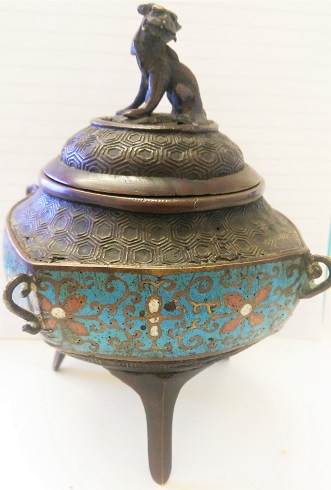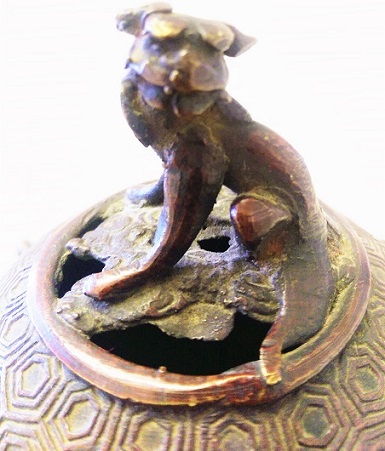
|
Subject:Re: Chinese Cloisonne Censer
Posted By: Bill H Sat, Jan 23, 2016
This type of champlevé enameling and the shishi (lion) finial on the cover are stylistically Japanese, in my opinion. I'd speculate that your censer may date to the fourth quarter of the 19th century (late Meiji period), based on signs of wear and use. However, keep in mind that such censers and other similarly enameled wares in the form of pots, vases, lamp bases and the like also were in production for the next 50 years or more in much the same styles and patterns.
Best regards,
Bill H.
|
 Chinese Cloisonne Censer
Chinese Cloisonne Censer  ( China & Japan ) - GerryG - Jan 22, 2016 (06:52 AM)
( China & Japan ) - GerryG - Jan 22, 2016 (06:52 AM)  Re: Chinese Cloisonne Censer - Bill H - Jan 23, 2016 (01:24 AM)
Re: Chinese Cloisonne Censer - Bill H - Jan 23, 2016 (01:24 AM)  Re: Chinese Cloisonne Censer - GerryG - Jan 24, 2016 (06:34 AM)
Re: Chinese Cloisonne Censer - GerryG - Jan 24, 2016 (06:34 AM)  Re: Chinese Cloisonne Censer - Bill H - Jan 25, 2016 (12:19 AM)
Re: Chinese Cloisonne Censer - Bill H - Jan 25, 2016 (12:19 AM)  Re: Chinese Cloisonne Censer - GerryG - Jan 26, 2016 (05:20 AM)
Re: Chinese Cloisonne Censer - GerryG - Jan 26, 2016 (05:20 AM) 

